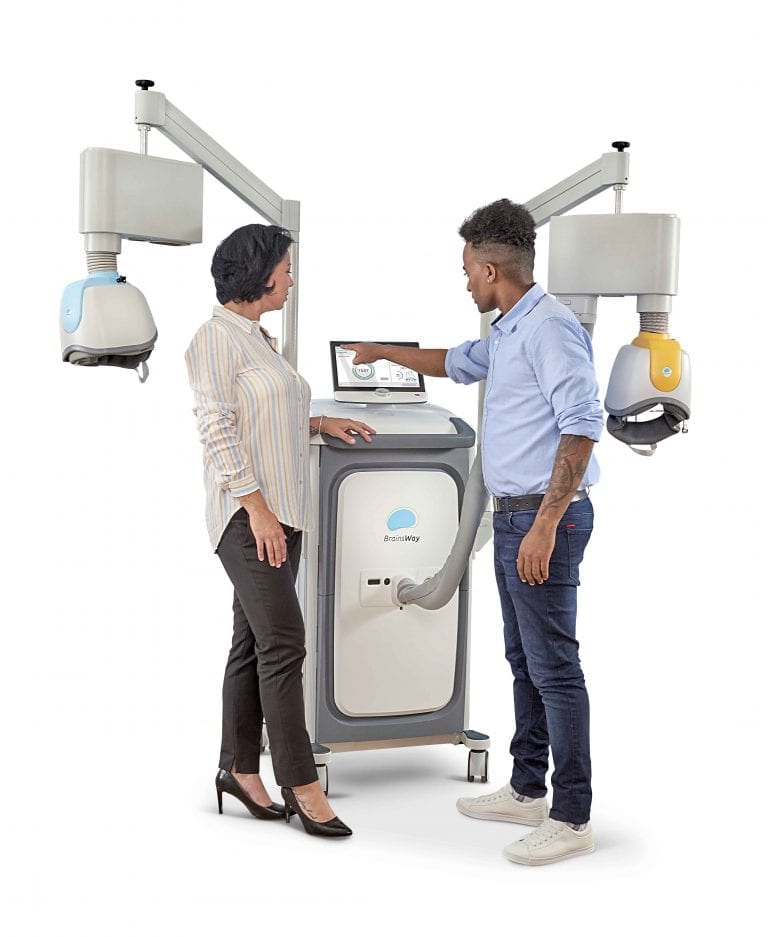Discover how Transcranial Magnetic Stimulation (TMS) offers hope and relief for OCD patients. Explore the benefits, success stories, and the process of integrating TMS therapy into an OCD treatment plan.

Obsessive-Compulsive Disorder (OCD) can significantly influence a person’s everyday activities, interpersonal interactions, and general well-being. For those who struggle with OCD, finding an effective treatment is vital. Transcranial magnetic stimulation (TMS) is an effective treatment option for OCD. We will go into the realm of TMS in this article, looking at its advantages, success stories, and how it may be included into an OCD treatment plan, giving those who are seeking relief hope and a better future.
Understanding Transcranial Magnetic Stimulation (TMS):
Transcranial magnetic stimulation (TMS), a non-invasive treatment for obsessive-compulsive disorder (OCD), uses magnetic fields to stimulate particular brain regions. TMS generates tiny electrical currents that activate neurons in the targeted regions by delivering magnetic pulses via a device positioned on the head. By altering neuronal firing patterns and releasing neurotransmitters, this approach eventually corrects the aberrant brain activity seen in OCD sufferers. TMS therapy is customizable, allowing treatment parameters to be tailored to each individual’s needs. With a strong body of clinical evidence supporting its effectiveness, TMS has shown significant promise in reducing OCD symptoms. By reshaping dysfunctional neural circuits, TMS offers hope for individuals to break free from the grip of OCD and regain control over their lives.
Benefits of TMS Therapy for OCD Treatment
TMS therapy offers a range of significant benefits for individuals seeking treatment for Obsessive-Compulsive Disorder (OCD). Understanding these advantages can provide hope and encouragement for those considering TMS as a viable treatment option:
- Effective Relief: TMS therapy has been proven effective in reducing OCD symptoms. Numerous clinical studies have demonstrated its ability to significantly alleviate intrusive thoughts, compulsions, and anxiety associated with OCD. The positive impact on symptom reduction translates to improved daily functioning and a better quality of life for individuals undergoing TMS treatment.
- Non-Invasiveness: TMS is a non-invasive treatment that doesn’t call for any anesthetic or surgical procedures. In order to stimulate specific brain regions linked to OCD, a device that delivers magnetic pulses is applied to the scalp during treatment. TMS is a safe and well-tolerated alternative to intrusive therapies because it is non-invasive and comes with no hazards or downtime.
- Minimal Side Effects: TMS therapy has been reported to have less side effects than alternative therapies. The most frequently reported adverse effects are a moderate headache or soreness in the scalp during or after the treatment session, both of which are usually mild and easily handled. TMS offers a more targeted and localized approach to treating OCD by avoiding the systemic side effects frequently linked with medicines.
- Customizable Treatment: TMS therapy can be customized to meet the specific needs of each individual. Treatment parameters, such as the duration and frequency of sessions, can be adjusted based on the severity of OCD symptoms and the individual’s response to treatment. This personalized approach ensures that each person receives tailored care and maximizes the potential benefits of TMS therapy.
- Long-Term Relief: TMS therapy has shown promise in providing long-lasting relief from OCD symptoms. Even after completing the treatment course, many individuals experience sustained improvements in symptom severity and overall well-being. This long-term benefit sets TMS apart as a potential game-changer in managing OCD, offering individuals the possibility of maintaining their progress and enjoying a better quality of life in the long run.
Incorporating TMS Therapy into an OCD Treatment Plan
To integrate TMS therapy effectively into an OCD treatment plan, the following steps are typically followed:
- Consultation and Assessment: The eligibility of the person for TMS therapy is determined after a thorough consultation and assessment. Examining the severity of OCD symptoms, medical background, and prior treatment outcomes are all part of this process.
- Customizing the Treatment Plan: Based on the assessment, a personalized treatment plan is developed. Factors such as the target areas in the brain, treatment duration, and frequency of TMS sessions are determined to best address the individual’s specific needs.
- TMS Treatment Sessions: During TMS therapy sessions, a specific device is used to transmit magnetic pulses to the desired brain areas. While the TMS technician performs the procedure, the patient is seated comfortably. Most people report no pain throughout the treatments, while a few people report light scalp sensations.
- Monitoring and Adjustments: Throughout the treatment course, the individual’s progress is closely monitored. Any necessary adjustments to the treatment plan are made based on their response and feedback. Open communication between the individual and the healthcare professionals involved is vital to ensuring optimal results.
Conclusion:
Breaking free from OCD is possible with the help of innovative treatments like Transcranial Magnetic Stimulation. By understanding the benefits of TMS therapy, integrating it into an OCD treatment plan, and learning from the success stories of others, individuals can embark on a journey towards reclaiming control over their lives. If you or someone you know is struggling with OCD, consider exploring TMS therapy as a promising option for breaking free from the grips of OCD and moving towards a brighter, more fulfilling future.












